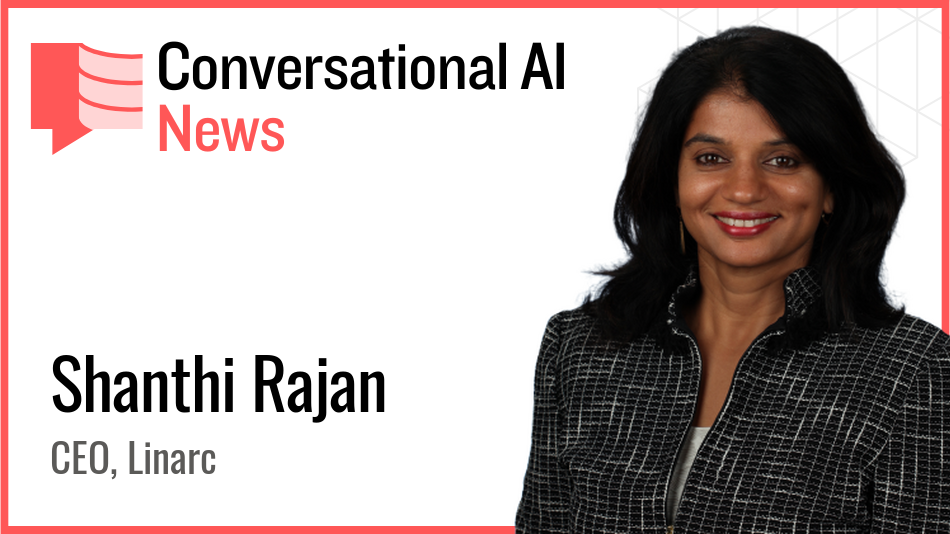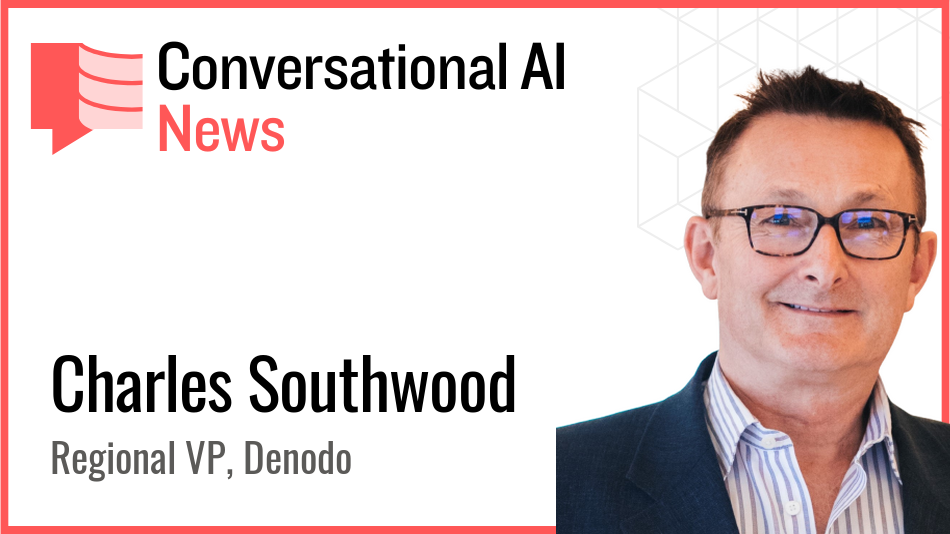Vendors: 5 ways to dramatically improve your Conversational AI pitch to clients

This morning I was sitting in a virtual pitch meeting with a large financial services company. I've been asked to advise on their approach to Conversational AI. My first step is generally assessment of the firm's existing capabilities, but that's also a bit boring for executives who want to get on with it.
So one of the steps I often recommend is a familiarity pitch or a limited beauty parade of vendors. I strongly advise the firm to make it clear they're not buying yet but invite a few companies to give a general overview.
One of the problems, though, is that the vendor pitch is shocking.
The vendor Sales and Business Development people are invariably excellent: Polished, professional, experienced, energetic and friendly. Everything you'd expect.
It's the actual pitch content that's rubbish.
And when I use the word rubbish, I do mean it.
Within minutes I can see the senior executives reaching for their phones as the Teams call begins.
Worse, I sometimes see the senior executive(s) firing up the mute button on Teams as they're having brief conversations with colleagues who've wandered into their offices – while the vendor is actually speaking!
The vendor's team do their best. But with shitty material... what can you do?
Who writes this stuff?
Well, the answer is people who think they know what their clients want.
But let me tell you this: Hardly any vendor has an accurate idea of what their clients want. Hardly any vendor has an accurate idea of what their EXISTING clients value from their services.
Let me ask you this question, just to clarity how right I am: When is the last time you had an independent agency (or person) go and speak to your client executives and ask them why they use your services and what precise value they get?
If you put the Chief Commercial Officer, Chief Product Officer, CEO, Head of Customer Success and the Head of Marketing in a room, and ask them these questions, you'll get 5 different answers, maybe more.
I do find it astonishing how many vendors are simply relying heavily on their own opinions when it comes to thinking they know how customers value and understand their services.
This then translates very, very quickly into shockingly bad (but good looking) Powerpoint presentations that end up dramatically confusing customers.
There's nothing worse than being in a pitch as a senior customer executive (I've been there many times) and being thrown irrelevant slide, after irrelevant slide by the vendor team.
You get to 28 minutes into the 30-minute pitch and then have to interrupt with something like, "Yes, but ... what do I get? What's the output?"
Then the vendor responds with something like, "Well, that depends on how you want to use it?"
And I then reply – exasperation rising – "Right, but what do other banks do? How do your other customers use it?"
Then I get blank faces.
As we hit 29 minutes and I can see my team demanding I quite the pitch and join the next meeting, I prompt with something like, "Look, what's the rough cost and what kind of benefits can I expect?"
You've guessed it.
Invariably, the vendor can't answer.
Or doesn't want to answer. Not quite yet.
That's because we're into the 'how long is a piece of string' question. They've got their Excel spreadsheets prepared. They already know they're aiming to take $5M from my company in the first year, because they've done some calculations on my public customer figures and made some assumptions on message flows, licensing costs, etc., etc. But they want the second meeting.
"Ok, fine, fine, send me a follow up..."
And we end the meeting.
Then the whole circus begins again.
What really helps?
But do you know what really helps me, as the client executive? Bumping into another senior bank executive from a non-competing bank in a different country and talking to them about their Conversational AI strategy.
"Oh, we used [vendor name]," they'll immediately volunteer, "and we've managed to redeploy 200 FTE in just 6 months. Yeah. It's amazing. Have you spoken to Mike there at [vendor]? Let me send you an introduction now."
That's often how we end up making the base level decisions, because the vendors are so utterly useless at explaining the benefits that I and my team actually care about.
"How much did it cost?" I'll prompt.
"Oh, they'll tell you $5M, I reckon. They'll also dazzle you with per-message or per-conversation costs. Just offer them a flat $2.5M fee for 3 years unlimited and they'll probably go for it."
Useful. Useful. Useful.
That's one of the reasons executives do genuinely try and make a bit of time to get out of the office and visit some conferences or events – to get access to this level of insight. (Or, self-serving point here: They hire me!)
I've been narrating my experience from a banking perspective, but I work with a lot of executives beyond banking - in automotive, travel and so on - and it's generally the same situation.
So, if you're a Conversational AI vendor, here are 5 tips to consider:
1) Know your value
If I challenged you to get your top 5 people together and asked you what features and aspects of your services your clients actually value, would I get the same answers?
If the answer is "maybe" (i.e. you don't actually know) then I would thoroughly suggest you do the following exercise: Appoint an independent – an individual, an agency – and ask them to reach out to each of your key clients and conduct a 1:1 executive survey, ideally with video footage. Get them to ask your client senior executives WHAT they think of you. Then you build your messaging from this. Not from the random ideas, biases and feelings of your executive team.
It's like holding up a mirror.
In fact, that's the name of the service my colleague Dan Ilett at Tollejo offers - "the mirror". He does this for large vendors. I would strongly recommend it. Let me know if you'd like a warm intro to Dan or just connect directly with him. Here's Dan's profile:

Dan is one of a whole host of people you might engage to help you. Absolutely do not do this yourself as you'll get inaccurate answers.
2) Fix your website
You need to pass the 5-second message test. Again, this isn't something you can do. You need to work with some independents (like Dan, me, your PR firm, etc.) to help you look at your offerings objectively.
Invariably your website just doesn't work for the executives you're targeting.
This is very, very important.
You have about 5-seconds to get your message across to the client executive teams.
If, within 5-seconds, I can't understand your offering, or if you just look like every other vendor – you've got a problem.
This is why it takes you 30 minutes to explain, when it should hit the client's brain in < 5-seconds, then they should use a further 25 seconds to pad that out.
3) Fix your pitch decks
Are your pitch decks amazing?
No, honestly. You can tell me.
Agreed.
They're not that good.
It doesn't matter how shiny they are.
We can make them shiny by sending them to that Fiverr agency who charges $80.
But have you constructed the messaging that your target clients actually care about?
Or... are you using the messaging that a random selection of folk in your team threw together because it's probably about right?
99% of pitch decks are a product of everyone-and-their-dog biases and commonly-held but often inaccurate opinions.
One Conversational AI pitch deck I looked at recently opened with "we're the world's leading carbon neutral vendor". Something like that.
"Our research shows," the Chief Revenue Officer tells me.
Does it really.
"Yeah, you just need to look at the annual reports of these [target clients]. They're obsessed about ESG. So we bought a load of carbon stuff and now we're carbon neutral."
Oh dear.
Is that what your client actually values?
Is this what you heard the client's CEO say on a Quarterly Market Report to investors? That doesn't mean it applies to you and buying your services.
In some industries, the amount of people you can redeploy thanks to Conversational AI is what actually matters.
Another pitch deck I saw opened with "Cloud Enabled Conversational AI".
That was the first slide. The one they fixated on for about 5 minutes whilst the vendor executives stared into space.
If you think that's an exciting hook, think again.
4) Get an Advisory Board
You're not expected to be experts on every client industry. That's why it is often difficult to create the right pitch decks for every key market you serve. But, by using some of the approaches above – you're likely to get a much better pitcure than where you are today.
You can supplement this by creating an Advisory Board. Fill it with senior executives who've worked in your target industry and who have a good network. Get them to help you with the pitch deck content. Ask them to spell out how they'd like to be 'sold' your services.
Ask them to reach out to their colleagues who are LIVE in the industry at the moment holding senior executive positions. NOT to sell to them. No. Get your advisors to buy a really, really nice lunch with the executive on the basis that they'll give their views on the market, the industry and the key value propositions that matter.
Introductions to prospective clients from your Advisory Board can come later. They aren't important – at all – if your pitch and your offering is rubbish. That's just a waste.
5) Look Carefully At Your Business Model
Why do you need per usage pricing? I understand why YOU want it. But it just winds up everyone else in the market, especially the executive who has to budget for a total unknown.
Should I budget for 20 million conversations a year?
Or 200 million?
Do you want to incentivise me to try and find a way to kill your business?
If you're charging me per conversation, that sounds lovely when I'm doing 200,000 conversations a year, right?
But when I'm looking at having to budget for 50 million conversations, when the net difference between 20 and 50 is just some bandwidth and processing costs, we've all got a problem. All of a sudden, you've gone from being the goodie to the baddie in my eyes.
Tier it, by all means.
But give me an unlimited option.
Then start thinking about all the value adds you can offer me on top of this.
Just because your investors are cackling with glee at the per-usage fees and the bazillions in profits you'll make in year 5, this doesn't mean it's going to work in market.
As you already know.
You're already being asked, right? How many times has a client asked you, "Look, seriously, how much does it cost? Give me a number!"
And you're desperately trying to find a way to hold on to your per-usage fee structure.
There's a reason almost everything else in my budget is capped or unlimited or fixed fee, because I can plan.
The last thing you need is me to tell my team to start de-prioritising some features in the Conversational AI to try and reduce the per-usage fees which, as we all know, are generally very small.
6) Give me a Go Live Guarantee
Here's a bonus tip: Implement a Go Live Guarantee.
Most vendors think I'm nuts.
"That's impossible!" They tell me.
Is it?
"Yes, because the client keeps changing things and you know, they don't listen... and they try and configure it this way, and that way..."
"Right," I content, "But what would a Go Live Guarantee look like, if you had full control?"
"Oh that would be easy," replies the vendor, "We could go live in 90 days, guaranteed, if they stuck to the plan."
Great.
Offer that. The minute the vendor wants to deviate from the plan, the Go Live Guarantee is invalidated.
Most senior client executives love, love, love Go Live Guarantees, especially when there is little flexibility for 'configuration' or 'custom code'. Most executives want plain vanilla - for speed, efficiency, cost – and because it's invariably better to fit to your way of doing things. I want to kill all of our stupid business processes anyway. This is a great way of helping me transform. It's the rest of my team that start wailing and demanding custom code and custom integrations because that's the way it's always been.
9 times out of 10, you're actually helping me by offering a Go Live Guarantee that gets my basic Conversational AI capabilities live in something like 30 or 90 days.
Thank you for reading.
If you'd like any advice or perspective, please send me a note: You can get me on LinkedIn or find my contact details here.






